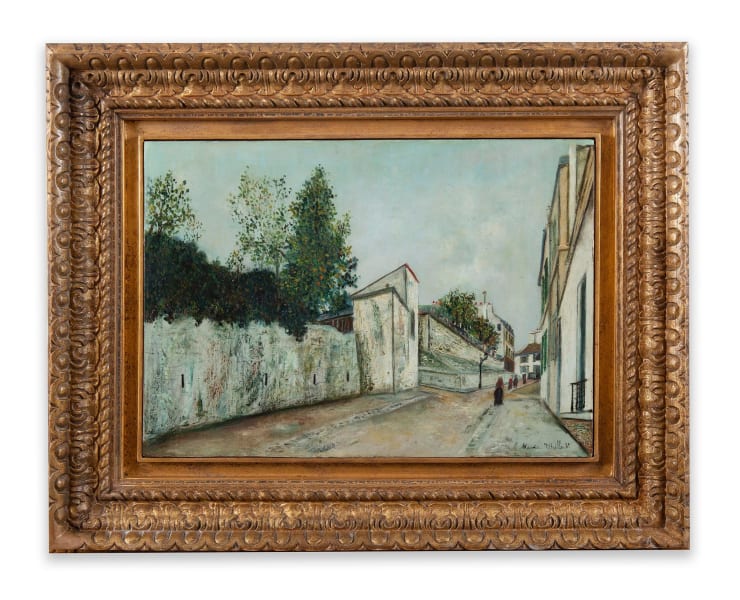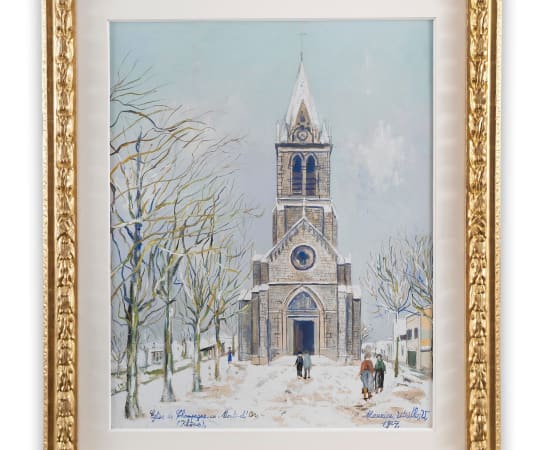Maurice Utrillo (1883-1955) French
أعمال
سيرة ذاتية
Maurice Utrillo (born on the 26th of December 1883, Paris, France - died on the 5th of November in Dax, France) was French painter associated with l’Ecole de Paris, and who is mainly known for his depictions of Montmartre. While his art looks naive at first, it shows a keen understanding of linear rhythms and refined graduations of tones.
Son of Suzanne Valadon, Maurice owes his name to the Spanish painter and writer Miguel Utrillo who recognised him as his child after a while but never stayed in touch. Utrillo was tumultuous and subject to crises of anger, which he dissipated by drinking alcohol. This addiction owed him to be hospitalised seven times throughout and was of great worry to his mum who convinced Utrillo to start painting in an effort to stop drinking.
The artist’s most prolific period, known as Période Blanche (“White period”), lasted from 1909 to 1915. What differentiates these paintings is the use of glue and white chalk to represent the materiality of Montmartre’s houses and their white walls – also mixing colours with this melange. As soon as 1910, art critics such as Elie Faure and Octave Mirbeau showed interest for the works of Utrillo. Francis Jourdain asked Utrillo to participate at the Salon d’Automne, and in 1913 the artist got his first solo show at the gallery Eugène Blot.
In 1923, Utrillo moved to the Château de Saint-Bernard as his mother attempts to pull him away from Montmartre and its temptations – alcohol mainly. Many exhibitions followed, and Utrillo was commissioned to create decors for Serge Diaghilev in 1925 and the Opéra Comique in 1948.
Utrillo married in 1925 to Lucie Valore, the widow of one of his collectors, Robert Pauwels. The couple moved to the Parisian suburb of Vésinet where Utrillo stopped drinking, focusing on religion instead – a pious end of life which came with more and more muteness.
Enquire



